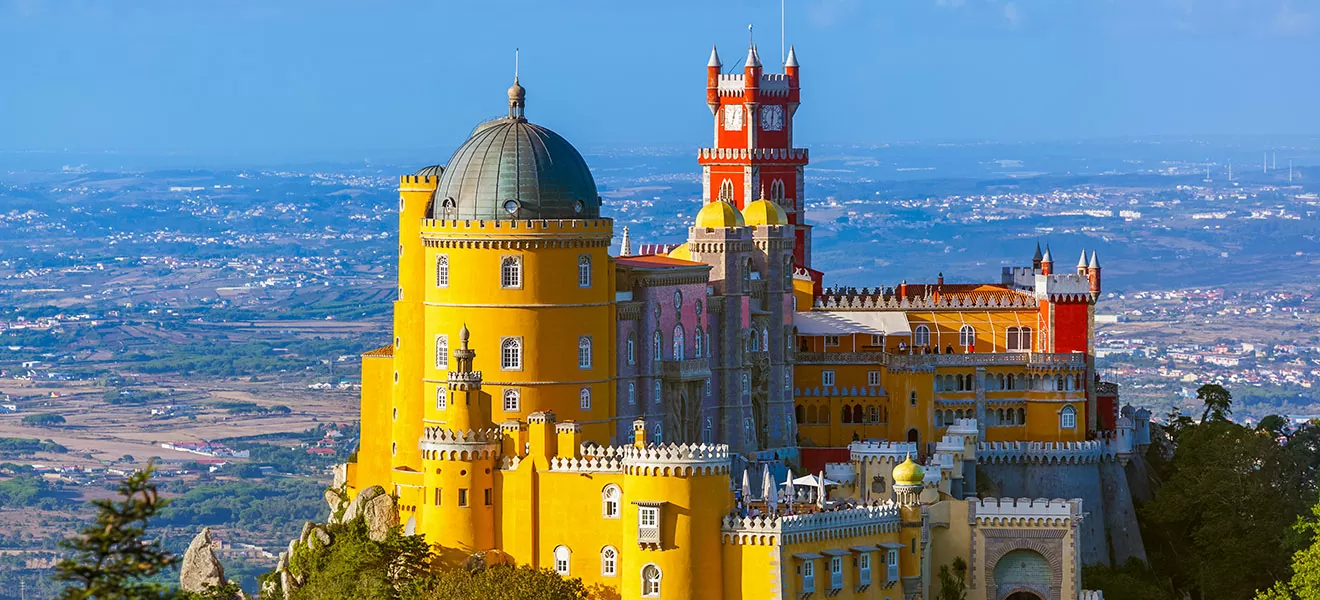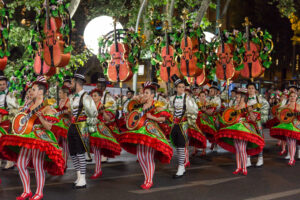Portuguese architecture reflects its rich history, numerous cultural influences, and willingness to try new things. From medieval fortresses and palaces to modern wonders, the country’s landmarks are fascinating windows into the past and present. Here are some of the most famous buildings in Portugal:
1. Jeronimos Monastery
The magnificent Jeronimos Monastery is located in the Belem district of Lisbon. It is a masterpiece of Manueline architecture, a unique Portuguese style known for its intricate nautical designs and decorations. The monastery was built in the late 15th to early 16th century to commemorate Vasco da Gama’s successful voyage to India. It is one of Portugal’s most famous landmarks for its beautiful facade, cloisters, and churches. The monastery is also the burial place of Vasco da Gama and other famous people.
2. Belem Tower
The Belem Tower is another famous example of Manueline architecture. It is also located in the Belem district of Lisbon. This defensive fortress was built in the early 17th century to guard the entrance to Lisbon’s harbour. Its beautiful details, such as nautical symbols and intricate stone carvings, indicate that it was built during the Portuguese Age of Discoveries. The tower has become a symbol of Portugal’s maritime history due to its unique cylindrical shape and graceful battlements.
3. St. George’s Castle
São Jorge Castle is an old fortress built by the Moors in the 11th century, located on a hill overlooking Lisbon. From the castle, you can see the entire city and the Tagus River. The well-preserved walls, towers and battlements show us how medieval defensive buildings were built and tell us about the history of the city. The castle is one of the most important sights in Lisbon. It has witnessed many great events and changes of government throughout history.
4. Pena Castle (Palácio da Pena)
Pena Palace is located in Sintra. It is a bright and interesting palace that looks like something out of a fairy tale. It was built in the 19th century and features Gothic, Renaissance and Moorish architecture. King Ferdinand II commissioned the palace as a summer residence. It is known for its bright colors, beautiful decoration and stunning views of the countryside. It is one of Portugal’s most popular tourist destinations and is a UNESCO World Heritage Site.
5. Porto Cathedral
The Porto Cathedral dates back to the 13th century and is one of the city’s oldest and most important landmarks. The cathedral’s architectural style combines Romanesque, Gothic and Baroque styles. The church’s impressive façade, solid structure and intricate interior details demonstrate its historical importance. The cathedral’s cloisters are particularly interesting as they are decorated with azulejos, a traditional Portuguese tile.
6. Joanina Library
The Joanina Library at the University of Coimbra is a beautiful example of Baroque architecture. Built in the 18th century, the library is known for its unique design, including gilded woodwork, intricate ceilings, and ancient manuscripts. The library is an important cultural and architectural treasure due to its unique design and historical collections.
7. Mafra National Palace
The Mafra National Palace is a magnificent Baroque palace and monastery complex in Mafra, about 30 kilometers from Lisbon. This palace was built by King Joao V to show off his power and wealth. It was completed in the 18th century. The complex houses a large cathedral, a library with a large collection of important manuscripts, and large royal apartments. The grand scale and exquisite design of this palace demonstrate the wealth and ambition of the Portuguese monarchy.
8. Calouste Gulbenkian Museum
The Calouste Gulbenkian Museum in Lisbon is world-famous for its modernist design, designed by architect Ruy d’Andrade. The museum has existed since 1969 and has a large collection of art such as Egyptian antiquities, European paintings and decorative arts. The design of the museum fits perfectly into the surrounding gardens, creating a peaceful place to enjoy art and contemplate.
9. Music House
There is a modern concert hall in Porto called Casa da Música. It was designed by the famous architect Rem Koolhaas. The building opened in 2005 and has a striking and unusual design, with a unique geometry and creative use of space. This is the venue for many music performances and has become an important building in Porto.
10. Vasco da Gama Bridge
The construction of the Vasco da Gama Bridge over the Tagus River in Lisbon was a modern engineering feat. When it opened in 1998, it was one of the portugal’s architectural landmarks will take you on an interesting journey through the country’s history. Each site shows a different part of Portuguese culture and heritage, showing the country’s many artistic achievements and influences. By exploring these famous landmarks, you can learn a lot about how Portugal’s architecture has changed over time and how it has contributed to the history of architecture around the world.




